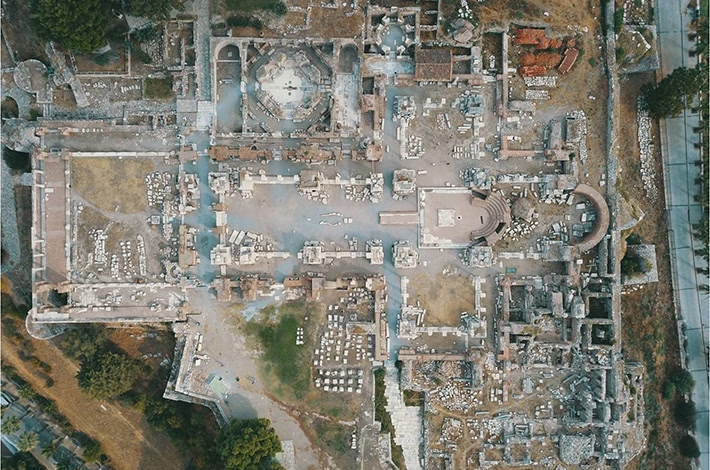Rising gently over the town of Selçuk in western Turkey, Ayasuluk Hill is not just an archaeological treasure, but a spiritual landmark that bridges ancient civilizations and early Christianity. Once known as Apasas during the Arzawa-Mira Kingdom and later as Ephesos, this historic hill is where St. John the Theologian—beloved disciple of Jesus and author of the Gospel and the Book of Revelation—is believed to have spent his final days.
From Apasas to Ayasuluk: A Journey Through Time
Ayasuluk Hill has been at the crossroads of civilizations for millennia. It served as the capital of ancient Apasas until it was conquered by the Lydian King Croesus around 560 BCE. As the nearby city of Ephesus began to decline in the 7th century CE, its population migrated to Ayasuluk. This marked the beginning of Ayasuluk’s rise as a religious and cultural center, especially under the Byzantine Empire.

The Tomb of a Saint: St. John’s Basilica
According to early Christian tradition, St. John the Apostle, also known as John the Theologian, spent his last years in Ephesus. After his death, he was buried on the southern slope of Ayasuluk Hill. Initially honored with a simple memorial, his tomb soon became a pilgrimage site. In the 5th century, a wooden-roofed basilica was built over the grave, which was later replaced by an awe-inspiring domed structure under Emperor Justinian I and Empress Theodora in the 6th century.
The resulting St. John’s Basilica became one of the most sacred Christian sites in Anatolia, drawing pilgrims from across the empire. After Ephesus declined, the basilica became the new seat of the bishopric.

Ayasuluk Castle: A Stronghold of Seljuk and Ottoman Heritage
At the summit of the hill stands Ayasuluk Castle, with fortification walls dating to the Seljuk and early Ottoman periods. Inside, you’ll find cisterns, the remains of a small mosque (Kale Camii), a Turkish bath, and a residence believed to be a bey’s palace. These structures reflect the deep imprint of Turkic-Islamic architecture layered over the ancient Christian site.
A Capital of Beyliks and a Gateway to the West
In 1304, the region was conquered by Turkish forces and took on the name Ayasuluk. It later became the capital of the Aydınid Beylik in the mid-14th century, leaving behind enduring works like the İsa Bey Mosque—a gem of early Turkish architecture. Though eventually incorporated into the Ottoman Empire, Ayasuluk remained an important coastal town until its decline in favor of nearby İzmir and Kuşadası.

The arrival of the railway in the 19th century and archaeological excavations at Ephesus helped the area regain significance. In the early Republican era, the town adopted the name Selçuk, honoring the Seljuk legacy.

Why Visit Ayasuluk Hill?
- 🕊️ See the burial site of St. John the Apostle, one of the most revered Christian figures
- 🏛️ Explore layers of history—from Hittite to Byzantine, Seljuk to Ottoman
- ⛪ Walk the ruins of St. John’s Basilica, once rivaling Hagia Sophia in grandeur
- 🕌 Visit Turkish-Islamic landmarks like İsa Bey Mosque and Ayasuluk Castle
- 📍 Situated near Ephesus, the House of the Virgin Mary, and the Temple of Artemis
Cover Photo: Kültür Portalı





